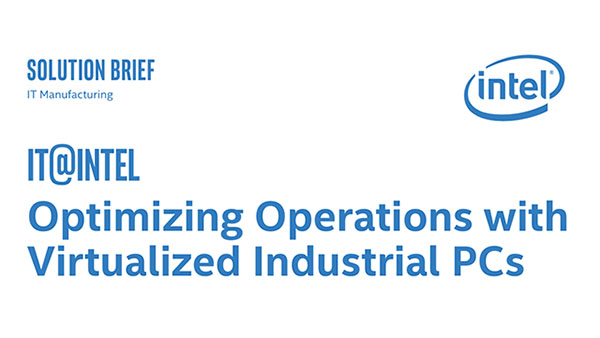IT@Intel: Optimizing Operations with Virtualized Industrial PCs

IT Best Practices: Intel optimized operations and reduced costs by virtualizing industrial PCs in front of individual production tools. The solution combines servers equipped with Intel CPUs, enterprise-level Intel Solid State Drives (Intel SSDs), virtualized storage, and virtualized servers that host all the industrial PCs (IPCs) that previously were next to each tool on the factory floor and are now hosted from the factory data center. The solution enabled Intel to avoid the capital expenditure of buying new PCs since each tool has a dedicated virtual PC. The company also has cut operating expenses by eliminating the physical PC installation, and it has freed up space in the clean room by relocating PCs from the factory to an on-premises data center. The virtualization also consolidates operations and maintenance, resulting in fast and easy repairs, lower operating costs, and more efficient operations. Using a stretched cluster across multiple data centers enhances business continuity and reliability. Other production facilities can realize similar benefits by implementing a virtualized station controller solution using IPCs in an on-premises data center on clusters powered by Intel Xeon E5-2600 processors and enterprise-level Intel SSD DC S4600 Series instead of PCs next to each tool on the factory floor.
For more information on Intel IT Best Practices, please visit intel.com/IT
Posted in:
Intel, Intel IT, IT White Papers, IT@Intel

